Scaffolding PLPs so students understand them
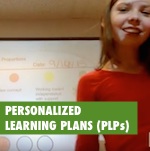 5th and 6th graders from Fayston Elementary School took their personal learning plans (PLP) in extraordinary and unexpected directions this year. All because of trust, dedication, and team work by their teachers.
5th and 6th graders from Fayston Elementary School took their personal learning plans (PLP) in extraordinary and unexpected directions this year. All because of trust, dedication, and team work by their teachers.
This livecast of a presentation at the Dynamic Landscapes conference exemplifies the approach. You will hear students presenting the nuts and bolts of the PLP process with ownership, eloquence, and insight. The attendant educators, Amy Jamieson and Jason Stevenson, provided behind the scenes scaffolding and support while making sure that students were front and center.
What makes these student stories so effective?
I had the honor of working closely with the Fayston team this year, which put me in a good position to observe the special aspects of their PLP process:
- There was a committed team of 7 adults that included classroom teachers, special educators, the technology integration specialist, the health teacher, and the principal. The team met weekly to plan, problem solve, and organize support for students. This weekly time was invaluable to the success of this project.
- Students were given the latitude to choose their goals. Some students focused on discrete academic skills, while others tackled long term real world projects. Eventually most students gravitated toward projects, and the adults figured out how to support them. The team decided, “When we’re thinking about goals, we’re going to say it’s personal goals. We’re going to have kids make goals around what they wanna make. It could be short-term academic stuff, it could be huge visionary projects. Whatever the kids wanna do, we’ll support it.” That was a really special thing.
- Evidence guided the work as the team collected and analyzed survey data, looked at student work, shared thoughts on specific student projects/progress, and generally used data in the best way possible as they worked through several cycles of inquiry, action, and reflection.
Students also had access to iPads with which to record their reflections, using simple and accessible tools such as Adobe Voice and Explain Everything. The students have been kind enough not just to share their reflection products publicly, but to present on their PLPs to a statewide audience of educators at the Dynamic Landscapes conference.
How Fayston students tell their PLP stories

Full transcript below.
How Fayston students tell their PLP stories
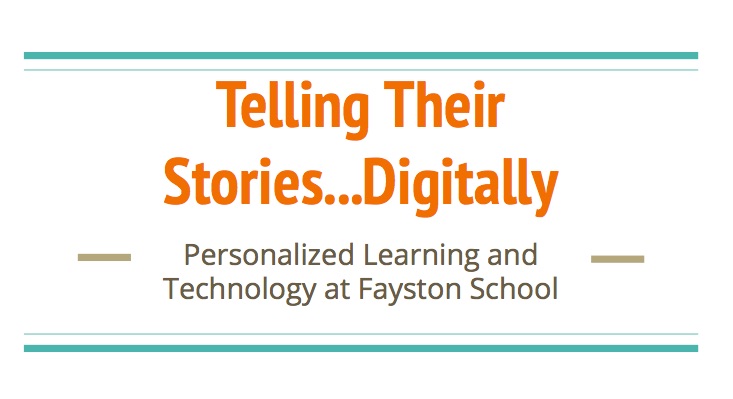
Amy Jamieson: Hi, I’m Amy Jamieson and I’m the speech-language pathologist at Fayston School. Today what we’re going to do is follow this timeline:
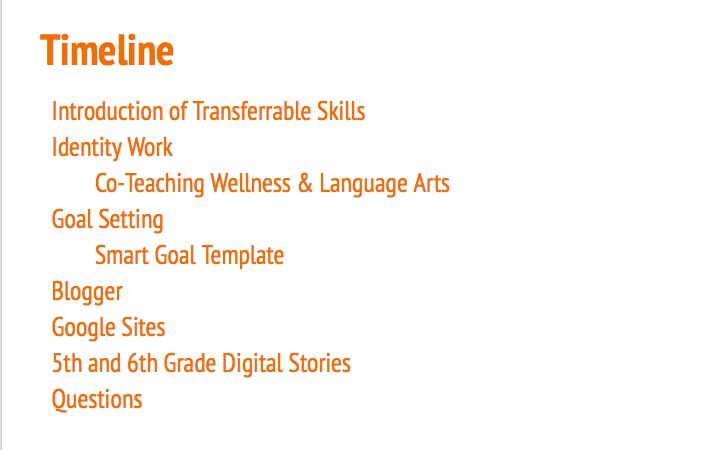
Our students are going to talk about how we introduce the transferable skills to them in the classroom, how the guidance teacher worked to introduce learning about their identities, goal-setting — they’ll show how we went through the goal-setting process with the kids and they’ll show you what they did, how they used Blogger and Google Sites to house some of their personalized learning plans. And then we have six digital stories to show you, that go from the beginning of the year to the end of the year and show how they reached their personalized learning goal this year.
Unpacking the Transferable Skills
Jordan: My name’s Jordan, I’m in sixth grade at the Fayston School. At the beginning of the year we did an activity to learn about transferable skills, and that transferable skills are:
- clear and effective commmunication skills
- citizenship
- problem-solving
- self-directed learning
- creativity
- informed and integrative thinking
First we worked by breaking into small groups. Each group had a transferable skill. We took the big words and put them into our own words that we could understand better. We then made posters to put on the walls of our classroom that we could look at through the school year when we think about our learning. Here are some of the examples of our posters:
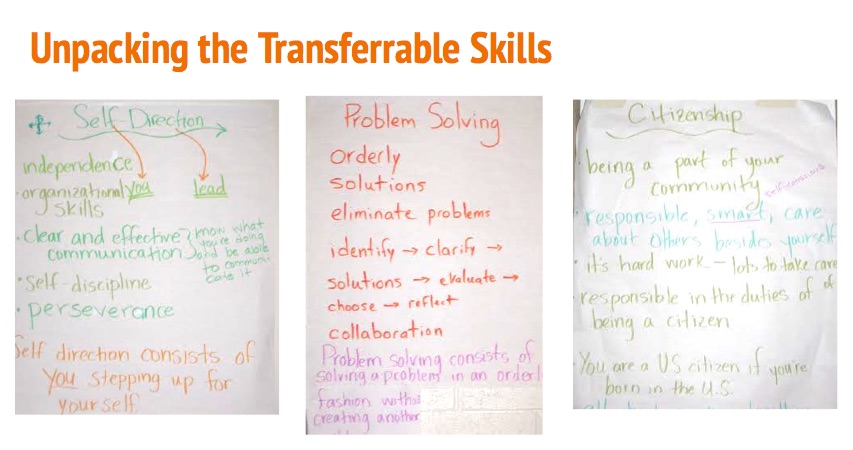
Jamieson: Here are the posters that the kids created, during their language arts class. As a team, when we were at the Middle Grades Institute, we thought, “Wow, look at these crazy words. ‘Self-direction, problem-solving, citizenship’ What does this really mean to 5th and 6th graders?” So they had the chance to break them down, and put them in their own words. And in each classroom, they remind the students about their daily learning. “How did I use problem-solving today? What did I do that was self-directed?” The kids refer to them a lot, and they’re more meaningful because the words are broken down into language they can really relate to.
Identity / About Me
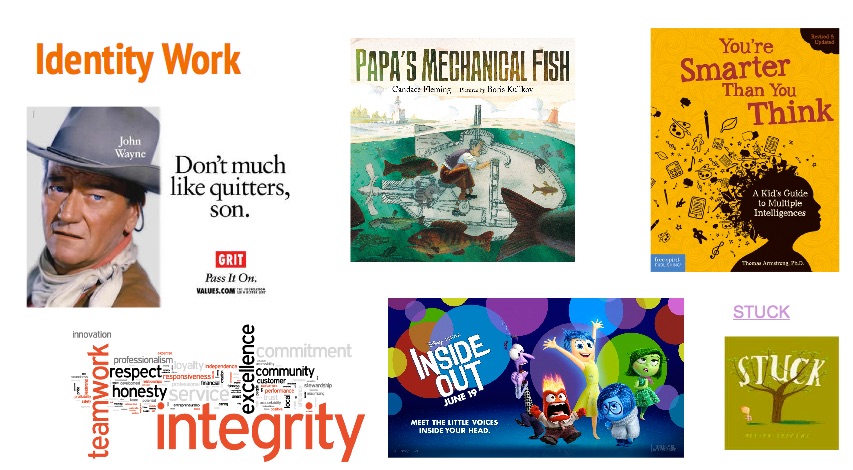
Hana: Hi, my name is Hana and I am in 6th grade at Fayston Elementary School. And at the beginning of the year, we learned about identity with our guidance coach Mr. Steve. We had many different lessons that helped us learn about ourselves. We learned about values, and what it means to be a good leader. We learned about qualities of a good leader, like patience, trying or doing your best, and perseverence, which is sticking with it, or grit.
We read books that had characters who had some of these qualities and created presentations in Google Slides.
We took an online survey to help us learn about our strengths.
We did a lot of projects like making collages and developing them into webs, making Wordles, and making poems with a word cloud generator that helped us find our values in different ways. We watched the movie Inside Out, and then did projects that represent our own identities, then made photos that represented things we liked. We took photos and blogged about these projects.
This is one of the islands that my friend made:
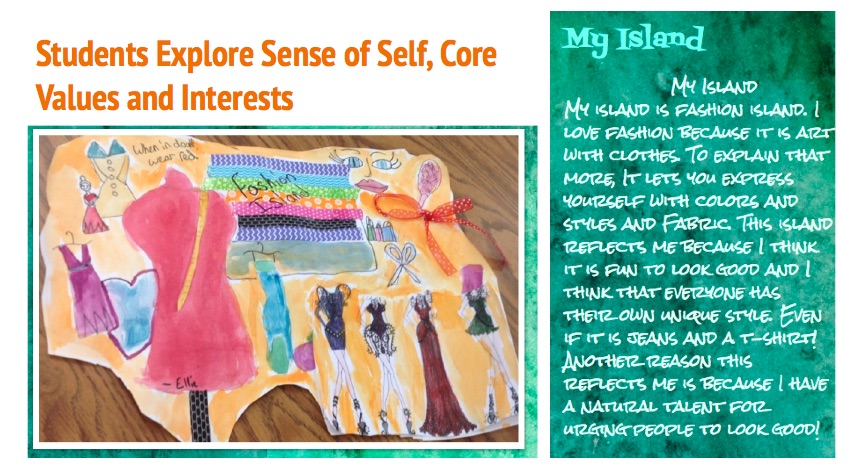
Her island was Fashion Island, and each person who made an island would also write a reflection on that and choose why they wrote it and why they made the island.
Goal-setting
Oliver: So before we set our S.M.A.R.T. goals, we had to learn about setting goals. So we did the Smarties challenge. What it is, is you set a goal, then you have thirty seconds to stack as many Smarties on top of each other, and you only have your pinkies. You only have two tries.
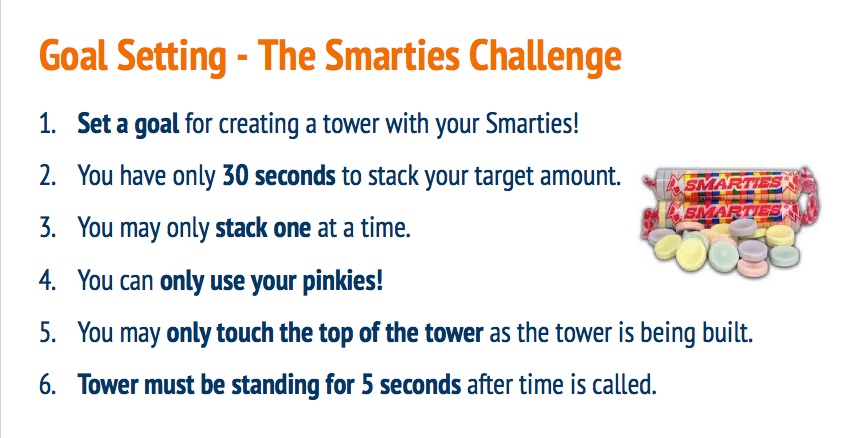
The first time a bunch of us set really really high goals that barely anyone made. And then the second time we set reasonable goals and most of them made them, and that’s how we learned to set reasonable goals.
Jason Stephenson, Fayston guidance coach: So this is how the scoring worked. Again, our goal was to get kids to set realistic, reasonable goals. We didn’t want it to be too easy, so:
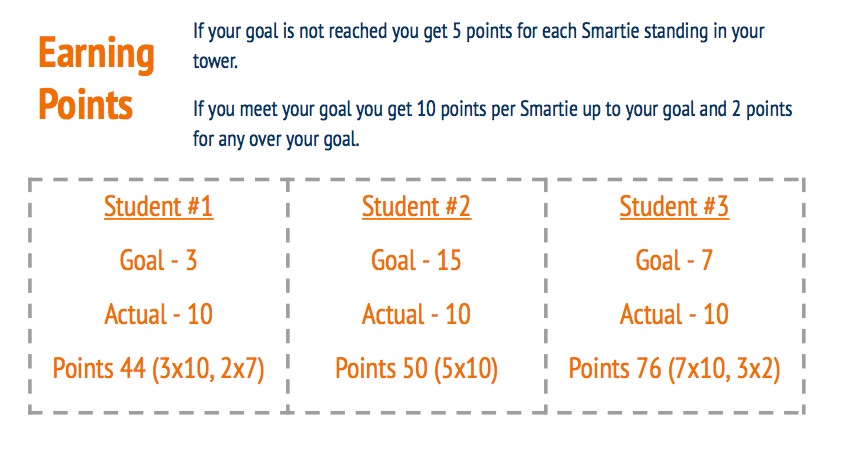
If your goal isn’t reached, you still get five points for each Smartie standing in your stack. If they reach their goal, they get 10 points for each Smartie up to their goal, then two points for any over the goal. So you can see Student #1 set a very low goal, Student #2 set a high goal, and Student #3 set a medium goal. All three students were able to stack the same amount of Smarties, but student #3 gained the most amount of points. Encouraging students to set a realistic goal: not too hard, not too easy. That was the goal of this activity.
Jamieson: And by the end of the activity I think there was some really great reflection that happened around the activity. Like, “Ooh the first time I thought I’d get 25! Then I only got two, and I realized I needed to lower my goal and make it a little more realistic.
What are S.M.A.R.T. goals?
Rohin: Before we set our S.M.A.R.T. goals, we learned about the word “smart” to help us set our goals. The S is for Specific, M is Measurable, A is Attainable, R is Relevant and T is Time-Based. My goal was to fundraise for our sixth grade class trip.
- My goal was specific because I’m a sixth grader and this was for the sixth-grade class trip;
- It was measurable because we would’ve either gotten the money by the end of the year or not gotten the money;
- It was attainable because classes before us have done it and it’s not a million dollars;
- It was relevant because I’m a sixth grader and it was the sixth-grade class trip;
- And it was time-based because we had to reach that amount of money by the end of the year.
S.M.A.R.T. Goals: how to support them
Ruslan: Hello, my name is Ruslan, and I’m in sixth grade. We use a template in Google Docs to help set up our S.M.A.R.T. goals:
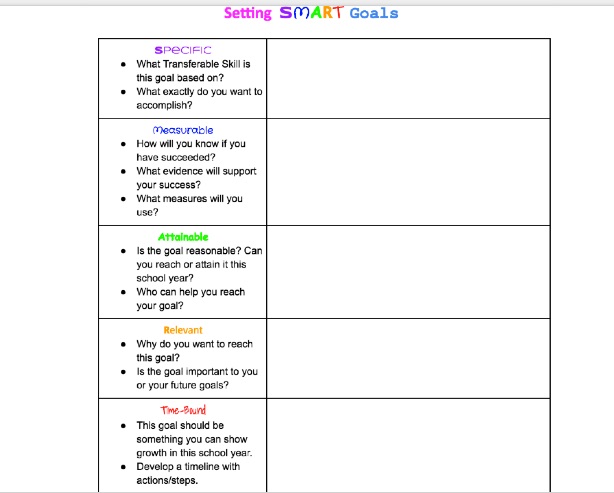
On the left side, there are questions that went with each of our SMART words, to help us make sure we had each part included in our goal. The plan was to refer back to each of these during the year to help us track our progress.
Advisory structure
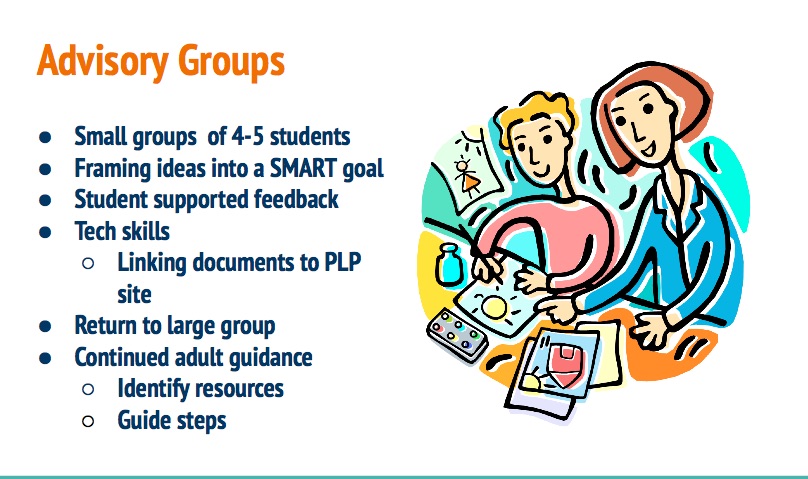
Jamieson: One of the things I think that was unique about our group is that with the number of teachers we had committed to the PLP process, we were able to break our students into smaller advisory groups. And this really facilitated the process, because we were able to break the students into one adult to four or five students, and help them use the Google template to really frame their ideas. Because the kids were starting to really blow us away with their ideas. We realized they had these really lofty ideas, but we needed to break it down into achievable steps for them.
After the SMART goals were created, we were able to return to a large group setting, and we found that there were enough adults to continue the guidance, but there was a lot of peer-to-peer conferencing and we found several of the students had similar goals. So they would group up and say, “I’m creating this fundraising project” or “I’m creating this website” and we found that the students were able to really support each other throughout the process.
And then within the building we were able to identify different resources. If you wanted to work a soccer clinic, you might have to connect with the physical education teacher. Or if you wanted to make sure there was more recycling done throughout the school you might need to speak with a custodian. So we were able to draw on additional resources just to support that.
Reflection, including an example of a student blog
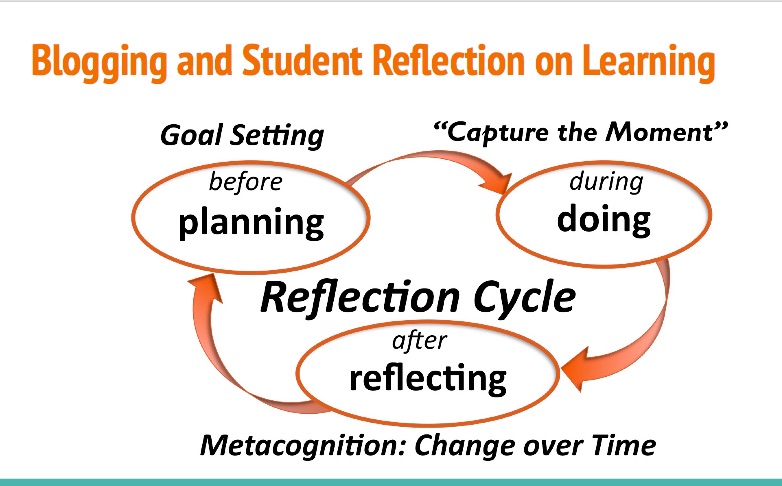
Sarah: Hi, my name is Sarah, and I’m in 5th grade. During our PLP time, we made a plan to set a PLP goal, and then we would work toward it throughout the year. Along the way we stopped and thought about how our PLP was going and how it did go as we accomplished it. We used Blogger to document our reflection on our PLPs and also on our classroom work. We wrote entries to post on our blog to talk about how our PLPs were going. Here’s an example of my blog, called “Sarah’s Magnificent Blog”.
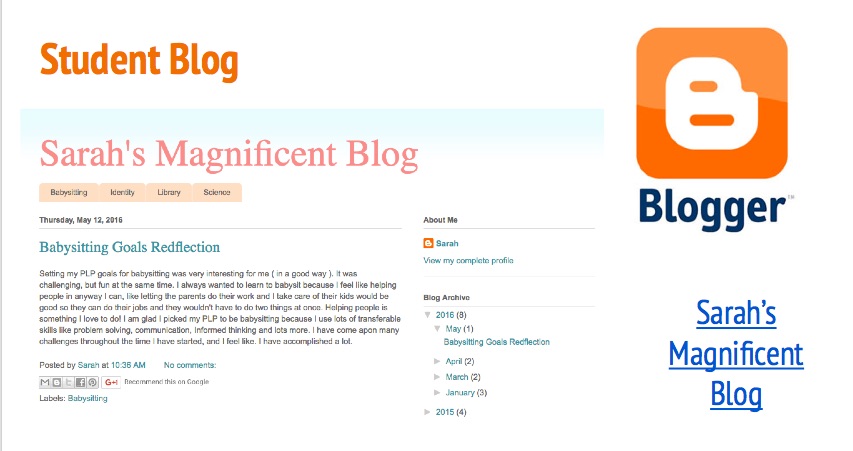
Jamieson: So, Sarah chose to create her own background and you’ll see not only did she reflect on her goal of becoming a babysitter but she reflects on working on an all-school project, and she was able to learn to import photos, snapshots of the web that were supporting her on her PLP process.
This one is from her skateboard-video blogpost:
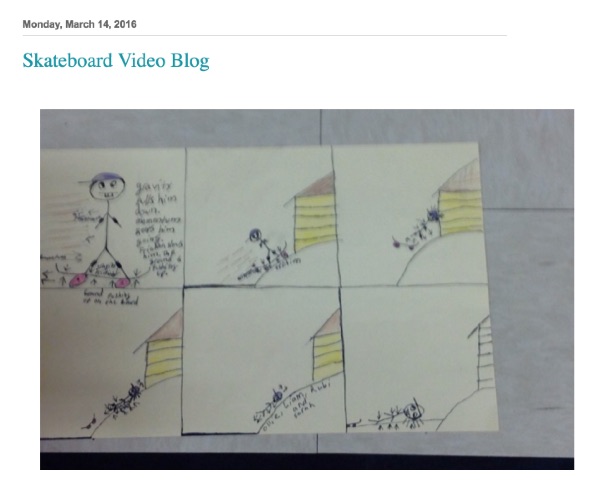
This is an example of student work that she put on her blog, and, this was all new to all the students, and it was impressive how they were able to incorporate this into their learning throughout the year. It’s also a place where they can reflect back. Here’s Sarah working on clear and effective communication during her PLP process:
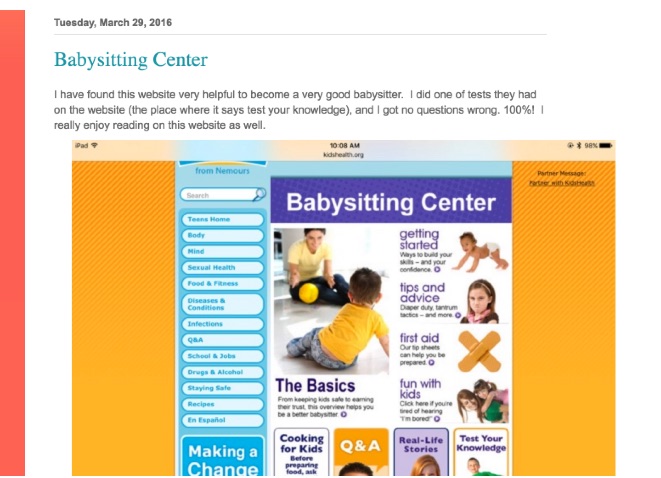
Having all these examples in one place, where they can say “That’s right, I can put that on my blog,” and they know where to go to find examples of their work.
Electronic portfolio, including an example of a student site
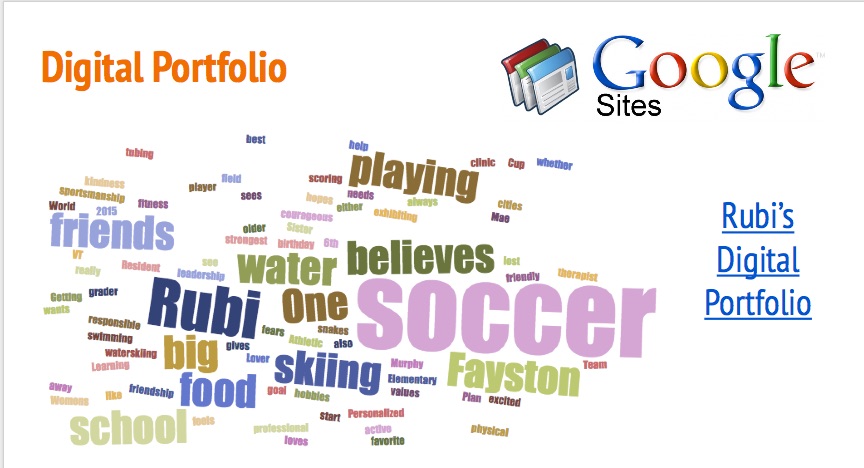
Rubi: My name’s Rubi, I’m a sixth grader at Fayston School, and during our PLP process, we used digital portfolios on Google Sites. And our tech teacher, Ms. Schlageter, created a template we could use. We had an About Me tab, which showed our identity work:
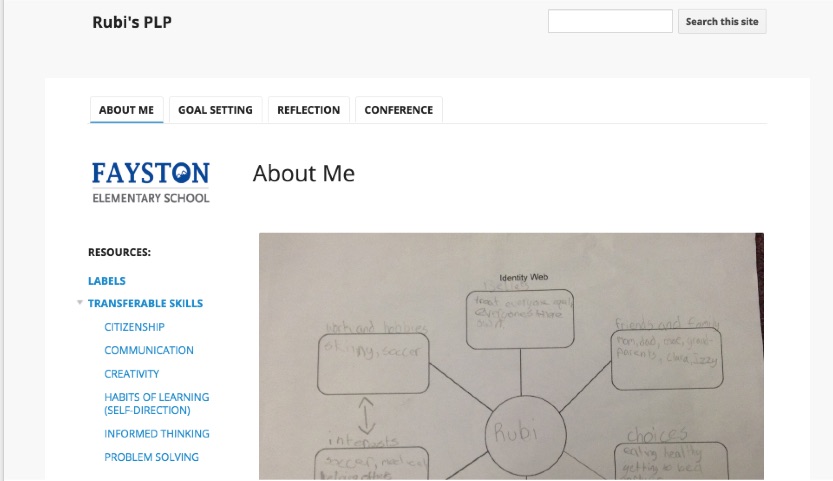
And then there was the goal-setting tab, which had our SMART goals template on it:
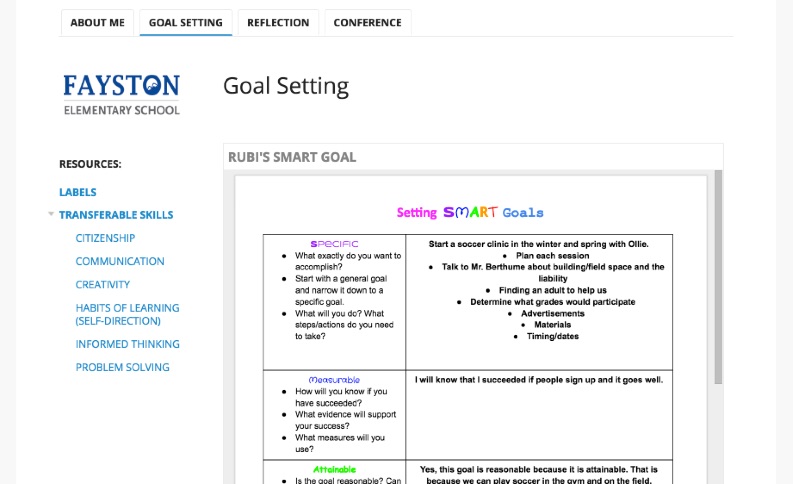
And then there was the reflection tab, which linked to a blog, so when we reflected on things, that would link to there.
The last tab was a conference, because we have student-led conferences, and that was something that we could look back at:
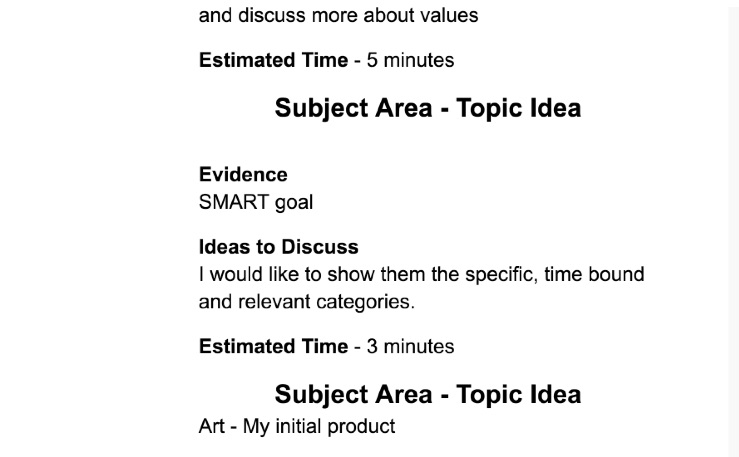
Jamieson: And that was something that when we went to the Middle Grades Institute, we thought, “We’re going to have all these components to their personalized learning plans, where can we house them?” We decided to use Google Sites. The kids took part in learning how to link each element to its component part, so there was a lot of learning that went on in that process.
Why storytelling around PLPs?
Jamieson: One of the ideas for these projects came about because we were trying to decide how to share with parents the personalized learning projects that the kids were doing. We were thinking about parent outreach, we weren’t sure how best to reach the parents, and these were projects that we began at the beginning of March at their student-led conferences. And I think each of the 36 students had something digital to share with their parents around their personalized learning goal. And I think it was a really effective way to get them to teach their parents about what they were doing.
@FaystonSchool getting psyched up to present. Joyce 210; Ready to be impressed! #vted pic.twitter.com/SFiqOTNJxp
— Allison Schlageter (@allisonschlags) May 24, 2016
What were the stories Fayston students eventually told of their PLPs?
- Hana taught kindergartners about nature
- Rohin used multiple strategies to raise money for the class trip
- Ruby and Oliver provided a free four-session soccer clinic for preschoolers
- Sarah started a baby sitting business
- Jordan ran the lighting for productions at a local theater and school events
- Ruslan built and sold woodworking pieces for fundraising
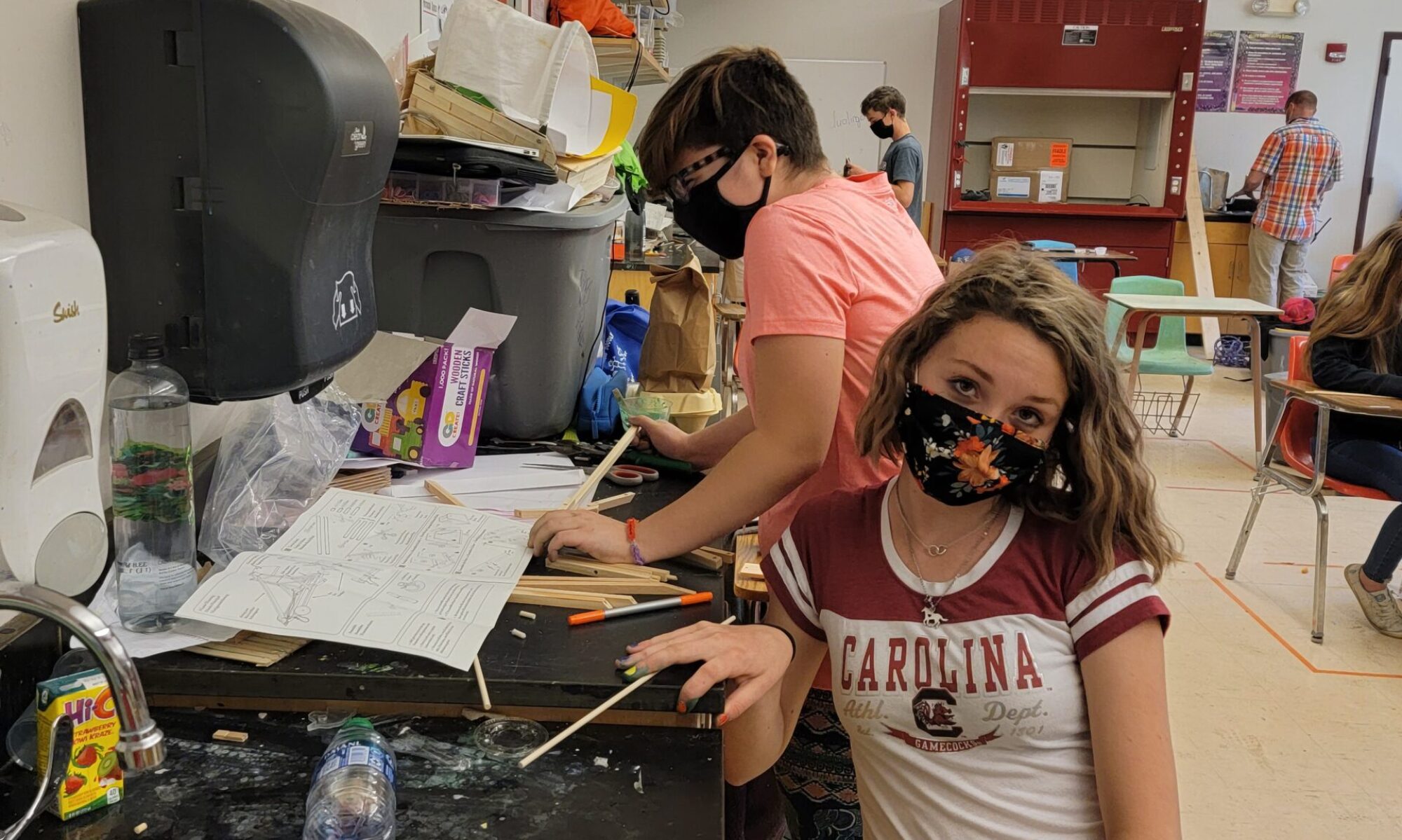

Comments are closed.